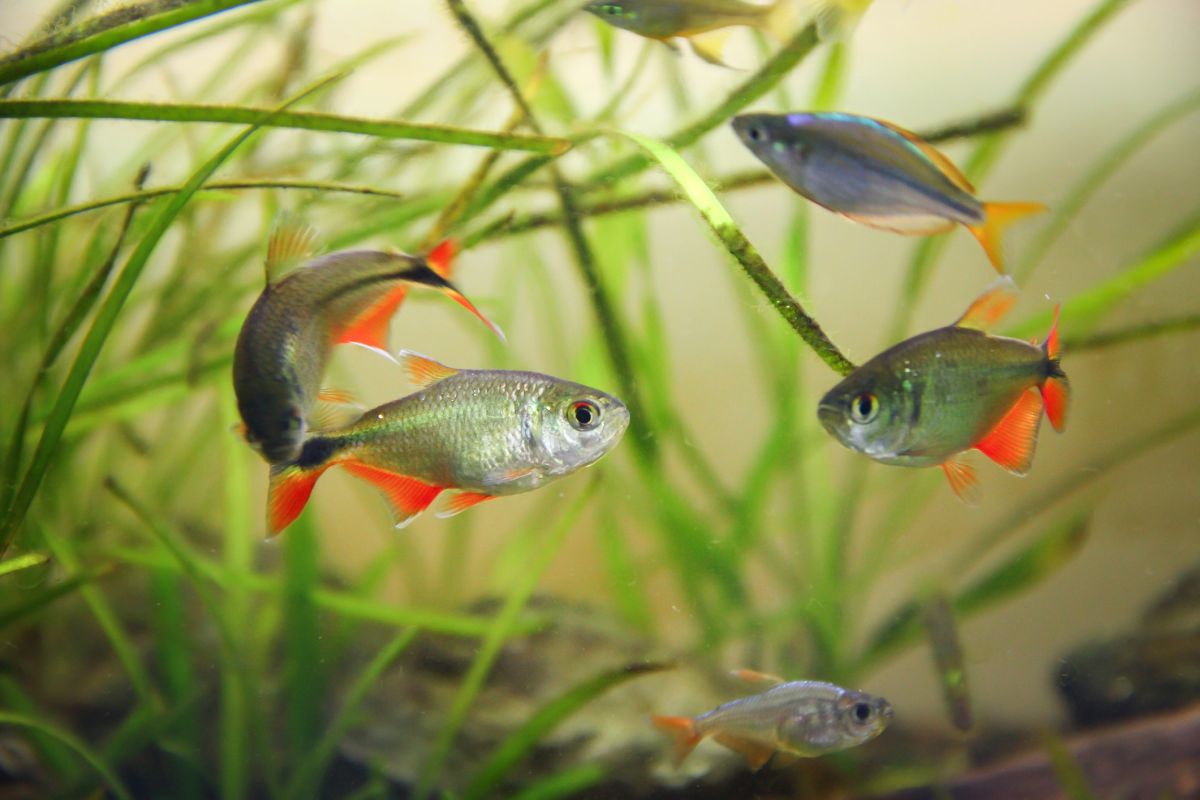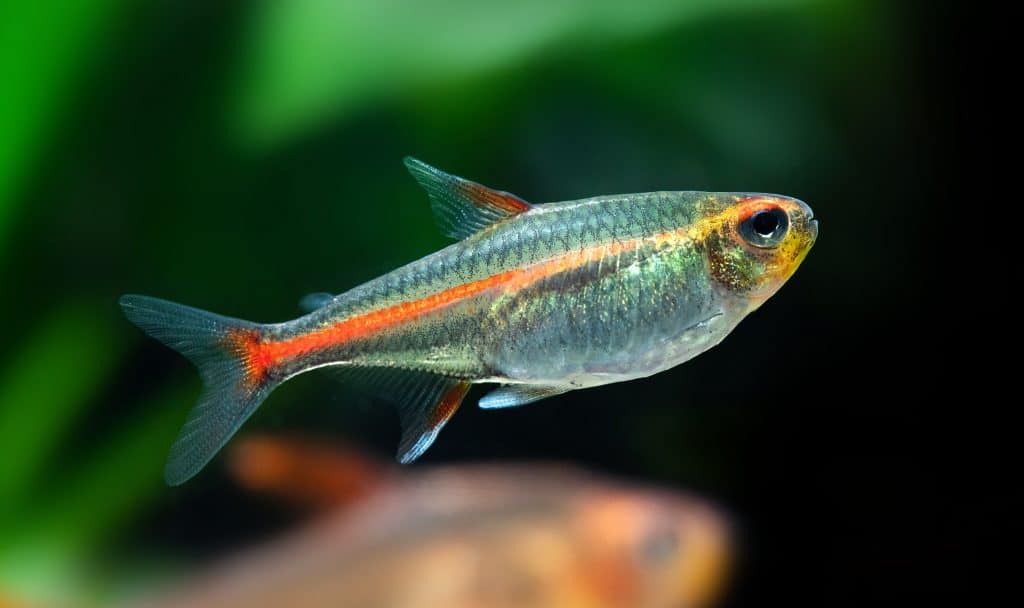Bettas originate in the shallow waters of Thailand (formerly called Siam, hence their name), Indonesia, Malaysia, Vietnam, and parts of China. These areas are home to rice paddies, ponds, slow-moving streams, and swamps, all of which are home to bettas. Today bettas have been introduced into many locations, giving rise to non-native populations in a number of countries.
The common name, Siamese fighting fish, was coined due to the practice of organized fights between males, much like cockfights. These matches continue to this day, driven by the income from betting. In some locations males are bred specifically for aggression, to ensure better fights.
Colors and Markings
The brilliant coloration and long flowing fins of the male betta make it one of the most well known of aquarium fish. Females are usually not as highly colored and have much shorter fins. In nature, this species is not usually brightly colored.
However, captive breeding programs have resulted in a wide variety of colors, including white, yellow, orange, red, pink, blue, green, turquoise, brown, and black. A myriad of combinations can be seen, from solid colors to those with different fin and body colors, to patterned colors. Fin types have also changed due to selective breeding. Veil tails have been joined by crown tails, deltas, fans, half moons, lyre, and split tails, to name a few.
Both sexes have a torpedo-shaped body and an upturned mouth geared for eating at the surface. Mature adults reach a size of two to three inches, with females being slightly smaller than the males. A unique feature of this species is the presence of a labyrinth organ that allows them to take oxygen from the atmosphere instead of from water, thus allowing them to survive in low-oxygen pools.
Tankmates
Males cannot be kept together unless there are separators in the tank. Multiple females can generally be kept together without problems, and a single male can also be added to the mix. They can be kept with other peaceful species of fish, as long as they are small and are not fin-nipping types, such as tiger barbs.
WARNING
Male bettas should not be kept with other fish that have similar body types and long fins, as they could mistake them for rivals.
Betta Habitat and Care
Bettas are one of the most recognized, most colorful, and often most controversial fish in the freshwater aquarium hobby. Debates rage about the appropriateness of keeping them in small bowls. To fully understand their needs it is important to become familiar with their native habitat, where they live in large rice paddies, shallow ponds, and even in very slow-moving streams. Although many fish keepers are aware that bettas come from shallow waters, the water temperature is often overlooked.
The home countries of the betta are tropical, which means the water temperature is quite warm, often into the 80s. Water temperature is perhaps the biggest argument against keeping a betta in a tiny bowl, which cannot readily be heat-controlled. Really, the best option is to house them in a betta fish tank.
WARNING
Bettas thrive on heat and will become increasingly listless when the water temperature falls below 75 F.
Since it’s so important for bettas to live in warm water, you’ll want to get a water tank heater. Consider the size of your tank when looking for a heater and choose one with a built-in thermometer so you can easily and readily see water temperature. You’ll also want a heater that can auto-regular water temperature. You’ll want to change your fish’s water at least once a week.
Even though bettas do well in waters low in dissolved oxygen, that does not mean they require less oxygen than other fish. Bettas have a special respiratory organ that allows them to breathe air directly from the surface. In fact, they inherently must do so. In experiments where the labyrinth organ was removed, the fish died from suffocation even though the water was saturated with oxygen. For this reason, bettas must have access to the water surface to breathe air directly from the atmosphere.
Optimally, the water for keeping bettas healthy should be soft, warm, with a neutral to slightly acidic pH. Water movement should be kept to a minimum, which means that power filters and powerheads are not suitable. Bettas may be kept in a community tank as long as the water conditions are met, and if no aggressive or fin-nipping fish are present. However, only one male may be kept in each aquarium, unless they are separated by a barrier.
The use of plastic boxes that hang inside the aquarium is a suitable option for keeping more than one betta in a tank, or for keeping them in a tank with fish that might nip their fins. Females will generally not fight with each other and may be kept together in the same open space.
Diet and Feeding
Betta fish should be fed two to four pellets twice a day. In nature, bettas subsist almost exclusively on insects and insect larvae. They are built with an upturned mouth that is well suited to snatching any hapless insect that might fall into the water. Internally their digestive system is geared for meat, having a much shorter alimentary track than vegetarian fish. For this reason, live foods are the ideal diet for the betta, however, they will adapt to eating flake foods and frozen or freeze-dried foods, such as:
- Brine shrimp
- Daphnia
- Plankton
- Tubifex
- Glassworms
- Beef heart
These are all excellent options that may be found frozen or freeze-dried. If flake food is fed, it should be supplemented with frozen and freeze-dried foods, and if possible, live foods.



Reviews
There are no reviews yet.